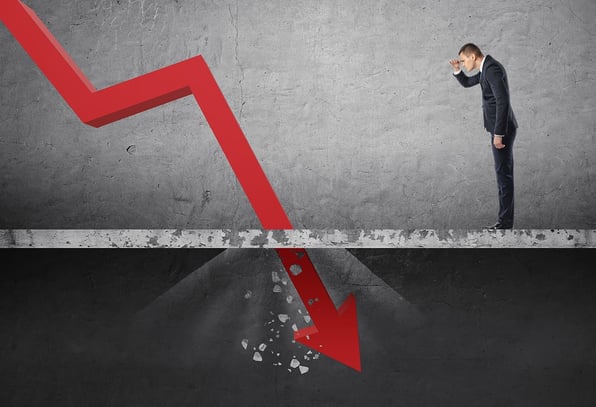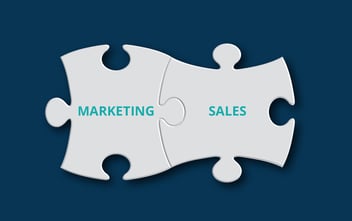Recession Buster #3: Restructure Your Marketing Programs and Spending

Today, I’m talking about relating to the management and prioritization of marketing programs in the context of a potentially strong recession. At this stage in the game, you are surely in the process of asking yourself how to improve the “bang for the bucks” and how to maintain a rich opportunity funnel. Considering the high chance that your company will reduce headcount and refocus on the core, it is expected that the priorities are going to change. The key question now is what stays in the toolkit and what gets sidelined for the time being. We are back to the “do more with less” frame of mind.
I posit that, in general, SaaS marketing activities have become commoditized. That is the first issue. Every company is applying the same model: demand gen, marketing automation, webinars, content production, national events, etc. It is a SaaS playbook that is quite common and is typically done very well if you have experts on your team. The issue is that, with every company targeting the same pool of folks (CFO, CRO, CMO, CEO), it becomes noisy and undifferentiated. The SaaS space is crowded. Consider that there are over 8,000 SaaS marketing solutions in the market all trying to get attention.
The second issue is that your customers are now looking at their pool of installed SaaS solutions and are making analyses of needs of what is vital to remain successful and what is just a “nice to have”. Hopefully, you stay in the first category because your solution creates real value for customers, and it is embedded in customer operations. If you are in the second category, you must quickly react and reposition your entire marketing programs to retain and churn avoidance. That pivot is not an option. It must happen now within the next 15 to 20 days by:
- Revisiting the nature and sequence of your marketing campaigns to address the current economic trends.
- Focusing on marketing that brings concrete value to customers using the power of the customer success team energized by innovative marketing programs.
- Engaging your customers with value realization initiatives to demonstrate the value you bring in the short-term, meaning within the last six months and the next six months. You may have started this in the past, but it is now time to make it formal and impactful.
- Delivering superior value to the end-users using the most progressive marketing tools. Here I refer to outstanding community engagement, specialized certifications, intimate user groups, advanced adoption programs, and exclusive novel content. No more plain vanilla marketing!
- Focusing on customer adoption to increase their impact. The latest study from Productiv shows that the average SaaS adoption is under 50%. When times are prosperous, companies invest in more software to improve productivity. Adoption might not be their number one priority. When times are taxing, low adoption means churn. You must now engage with your key customers and work jointly on increased adoption to increase the said bang for the buck.
We are entering in an era when marketing must be robust, impactful, and sustainable. The investments that companies are going to make within the next 24 months must bring payback. It is time for SaaS marketing 2.0.
For more on marketing in the Value Era, and how marketers can leverage customer value, download our "How to Maximize Marketing Impact" whitepaper.
Bio

Dr. Stephan Liozu (www.stephanliozu.com) is the Founder of Value Innoruption Advisors (www.valueinnoruption.com), a consulting boutique specializing in industrial pricing, digital business, and value models, and value-based pricing. Stephan has 30 years of experience in the industrial and manufacturing sectors with companies like Owens Corning, Saint-Gobain, Freudenberg, and Thales. He holds a Ph.D. In Management from Case Western Reserve University, and has written several books, including Dollarizing Differentiation Value (2016) and Value Mindset (2017).

 ValueCloud
ValueCloud
.png?width=118&height=76&name=Rectangle%20(3).png) ValueCloud Ignite
ValueCloud Ignite
.png?width=92&height=92&name=Rectangle%20(4).png) Free Assessment
Free Assessment
.png?width=100&height=100&name=Rectangle%20(5).png) Watch a Demo
Watch a Demo
.png?width=82&height=96&name=Rectangle%20(6).png) Value Calculator
Value Calculator

.png?width=62&height=51&name=Group%2010%20(1).png) Marketing
Marketing
 Sales
Sales
 Customer Success
Customer Success
 Engage Prospects
Engage Prospects
 Win Deals Faster
Win Deals Faster
 Retain Customers
Retain Customers
.png?width=62&height=62&name=Rectangle%20(8).png) Adopt and Scale
Adopt and Scale
.png?width=54&height=54&name=Rectangle%20(9).png) Cybersecurity
Cybersecurity
 Healthcare
Healthcare
.png?width=54&height=54&name=Rectangle%20(10).png) IT & Software
IT & Software



